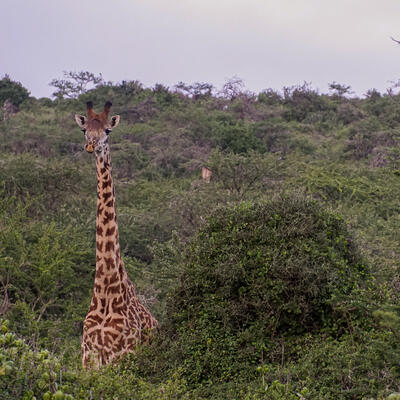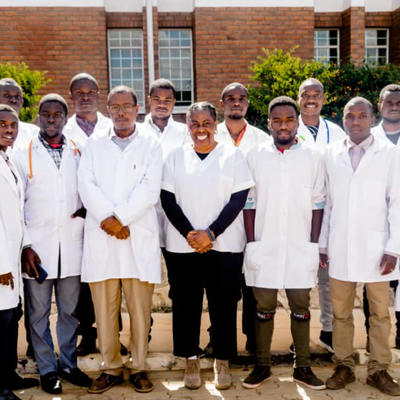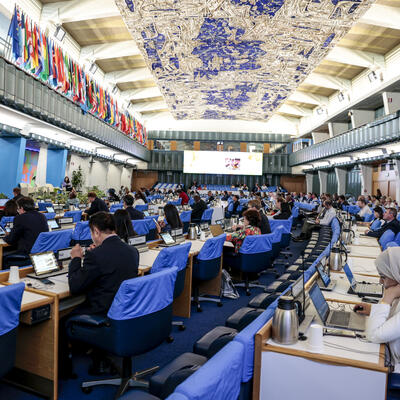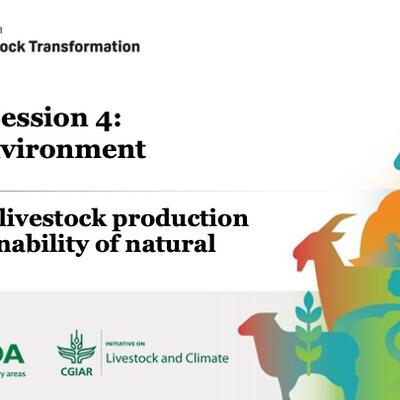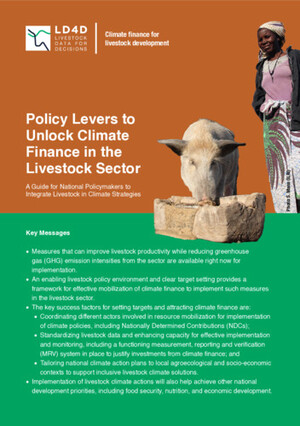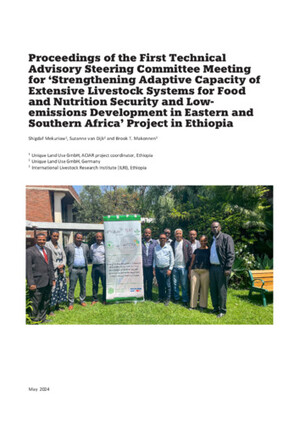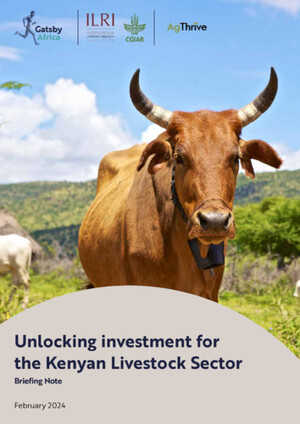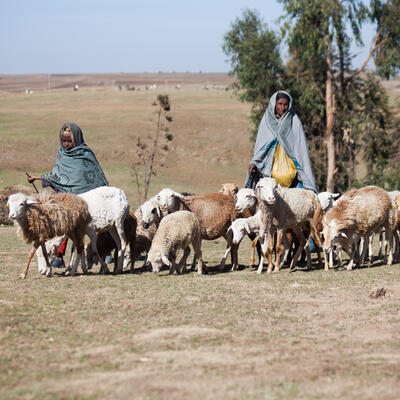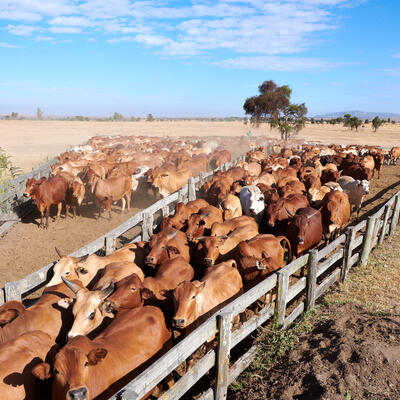
‘Invisible livestock’ – On the central roles of working horses, donkeys and mules on the smallholder farms that feed the world
By Klara Saville (Brooke), Carine Bambara, Anna Marry (both Brooke), Brian Perry (University of Edinburgh and University of Oxford).
 A Honduran maize and bean farmer and his horse (photo credit: CIAT/Neil Palmer).
A Honduran maize and bean farmer and his horse (photo credit: CIAT/Neil Palmer).According to World Bank data, 80% of the 770 million people living in extreme poverty are located in rural areas and most of them work in agriculture.
The vast majority of the world’s farms are small or very small. These small farms produce 80% of the developing world’s food, say the United Nations Food and Agriculture Organization (FAO) and International Fund for Agricultural Development.
So it is fair to say that to be poor today is to be a smallholder farmer.
However, something we and our partners in the International Coalition for Working Equids (ICWE) also observe in our work, which is not currently captured in official data, is that to be poor means to rely on working animals—horses, donkeys and mules, which are collectively known as equids. In the words of a member of a rural women’s group in Kenya: ‘Farming is made possible by donkeys’.
On smallholder farms that feed most of the world’s poor, animals are used to plough fields; transport water for crops and other livestock; carry supplies, fertilizers and equipment necessary for agricultural work; and transport produce to and from the market. In India, for instance, two-thirds of the country’s cultivated area is ploughed using animal energy.
Working livestock such as horses, donkeys and mules make a significant, yet largely unrecognized, contribution to the Sustainable Development Goals (SDGs).
First of all, working animals generate income, predominantly through their work in transport, thus contributing to SDG 1—No Poverty. According to research by Raphael Kinoti, from Farming Systems Kenya, donkeys bring an average of USD114 per month to a household in Kenya. In Pakistan, working equids support up to 100% of the income for households that rely on milk sales.
Their role in food security is no less prominent, helping to meet SDG 2—Zero Hunger. For example, in Senegal families with at least one donkey can achieve a 78% higher production of peanuts and 45% higher production of millet than those without a donkey.
Agriculture accounts for around 70% of global water use. In rural communities where water sources are often far away from human settlements, working equids carry water for crops and other livestock as well as for human consumption. In Tunisia, 80% of survey respondents living in mountainous areas relied on their donkeys or mules to access and carry fresh water (which means they contribute to SDG 6—Clean Water and Sanitation). In doing so, alongside performing other tasks in the household, the animals liberate women’s time that can be spent on more productive economic and social activities. Thus they help empower women and raise their status in the community (SDG 5—Gender Equality).
The importance of working animals is made crystal clear when they suddenly disappear. The recent outbreak of equine influenza across West Africa, with a death toll of 62,000 in Niger alone, took a toll on farming communities, leaving them poorer and more vulnerable to shocks. The World Organisation for Animal Health (OIE) has suggested that the outbreak may be a consequence of the unregulated global movement and trading of donkeys for their skins. Our evidence suggests that livelihoods suffer as a result of donkey loss, which plunges families further into poverty and undermines progress towards the SDGs.
 A paravet examines a mule in Darfur, Sudan (photo credit: Oxfam America-Elizabeth Stevens).
A paravet examines a mule in Darfur, Sudan (photo credit: Oxfam America-Elizabeth Stevens).Donkeys are an important if seldom acknowledged component of pastoralist societies, particularly for women, who use them to transport water, firewood and other crucial resources and for long-distance migrations across their dryland environments. Maasai women in Kenya are regarded as the owners of, and acknowledged experts on, donkeys. (We have heard a Maasai man claim that a household’s addition of a donkey, which can live for more than 40 years, is as important as that of a wife.)
In conflict-ridden Darfur, in western Sudan, where hundreds of thousands of people live in camps for internally displaced people, aggregated herds of tens of thousands donkeys can be heard braying throughout the night. One reason for there being so many donkeys in the camps is that many of these people who escaped attacks on their villages by government and Arab militias were able to do so only because women and children could ride out of danger on their donkeys. Today, the donkeys remain lifelines—not just beasts of burden but a source of wealth and pride, the possession of which can be the difference between survival and death.
If working animals are so important for agriculture, why aren’t they recognized by policymakers and program implementers from the local to the international level? A part of the answer may lie in the fact that communities ploughing their fields by horse or donkey are often perceived as backward and old-fashioned. Using animal draught power may be considered as a barrier to ‘progress’, which is understood as industrialization and mechanization. Importantly as well, horses, donkeys and mules are not production animals—their meat and other products such as milk are rarely used for human consumption.
One thing is certain, though—rural communities around the world are perfectly aware of how essential working animals are to their livelihoods. ‘Even though donkeys are relatively small, they make more money for us’, a woman from Mahavan, India, told us. ‘The donkey affects each and every aspect of my life as a woman’, testifies a young woman from Mwea, Kenya.
So what needs to happen for this to change? For starters, working animals need to be included in livestock policy definitions, censuses and databases as well as in animal health strategies and services. Technical capacity building will need to follow to ensure national-level implementation of the OIE Standards for the Welfare of Working Equids. Draught power provided by animals needs to be acknowledged in livelihood and development programming, sectoral value chain analysis and livelihood baselines. Last but not least, communities require state-led protection from the theft of their donkeys in response to the unregulated and growing demand for donkey skins.
More work is needed to collect, refine and put into use the evidence around the impact of working animals on rural livelihoods, agriculture and food systems. We then need a concerted effort by all concerned parties, from community-level organizations to national governments to international non-governmental organizations and UN agencies, to make sure that this important blind spot is addressed.
Thankfully, things are slowly changing for the better. In 2016, the FAO Committee on World Food Security formally recognized the role of working livestock in food security, putting equids on par with production animals such as cows and sheep. This is a vital step that will enable national governments to include horses, donkeys and mules in their livestock policies and legislation.
In August 2019, speaking at the All-Africa Conference on Animal Agriculture, Jimmy Smith, director general of the International Livestock Research Institute (ILRI), admitted that these animals should indeed be part of livestock and agriculture agendas.
ILRI is committed to a better integration of working livestock such as horses, donkeys and mules, into our work.
—Jimmy Smith
It is time that working horses, donkeys and mules received the recognition that they deserve. Without it, decision-makers cannot fully claim they are listening to the 500 million smallholder farmers that feed and secure livelihoods for some of the poorest communities around the world.







